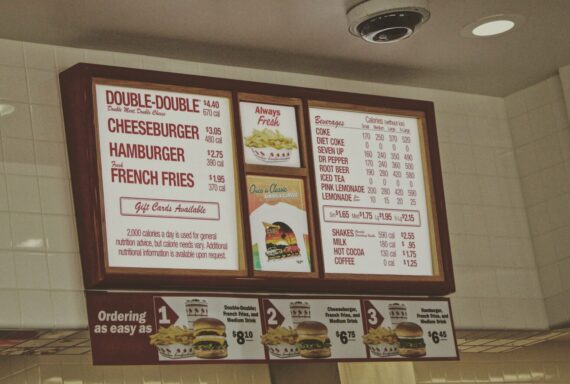Last month, the Government brought in new legislation on calorie labelling for restaurants, takeaways and other hospitality venues. Any establishment in England (with more than 250 employees) must now provide the following information on both their online and offline menus:
- Calorie content (in kcals)
- The size of the portion for the above information
- The daily guidance for the average adult (2000kcal a day)
Why is this happening?
The idea is that calorie information will be available to consumers at the point of purchase to help them stay informed and make healthier choices.
The government has long been looking at ways to help tackle the rising number of adults who are overweight, a figure that according to the NHS, currently sits at 1 in 4. Furthermore, the number of people in the UK with diabetes has doubled in the last 15 years, with a further 3.6 million people now at increased risk of type 2 diabetes.

Calories must be visible to the consumer at the point of order
Transparency is key
Displaying this kind of information will theoretically help those who eat out frequently to lower their calorie intake and make it easier to lose weight if needed or desired. Many people may have simply been shocked (and probably a bit gutted) to discover the number of calories in their favourite takeaway. Now customers can make an informed choice that tingles their taste buds without blowing their calorie intake for the day.
Some hospitality business owners might be worried that some calorific dishes might slide off the best sellers. If customers choose to take the labelling seriously, will there be a shift in menus with more lower calorie options available?
TMI?
The question is… is this really the best way to help people? Many are worried that it will fail to help those who really need the guidance whilst also spoiling the experience of eating out. Sometimes we just want to go out and treat ourselves to all the carbs or something greasy! On top of that many are worried having calorie information front and centre could be triggering to people with eating disorders.
There is also a clear focus on the kcals in the dish as well as the recommended intake, rather than the actual nutritional value of the meal. If the government is trying to encourage healthier eating then surely the number of calories is not the only thing customers should be considering when they choose to eat out?
It does however help people to stay more informed when it comes to what they are putting in their bodies when dining out or ordering takeaway (something that isn’t as straightforward as it sounds).
Customers can make an informed choice that tingles their taste buds without blowing their calorie intake for the day
Rules are rules
Unfortunately whether you’re for or against it, calorie labelling is here to stay. The government don’t plan to review it for at least five years, and have not ruled out the possibility of enforcing it for smaller businesses at a later date. With the regulation in full swing, all large hospitality venues in England should already be complying. Any business failing to could be handed penalties and or improvement notices.
Debate aside, calorie labelling hopes to put the needs and demands of the customer first allowing them to make informed decisions. Being honest and transparent as a brand is always a positive thing and remember, Slerp are always here to support through any changes.